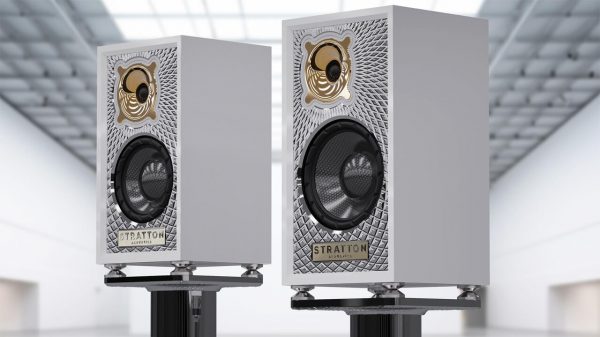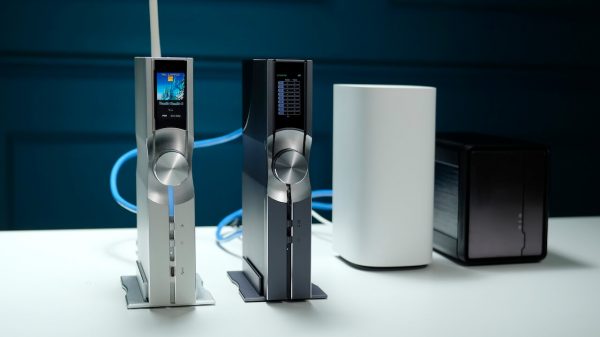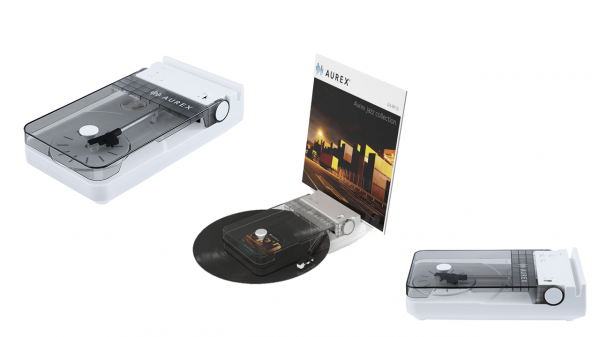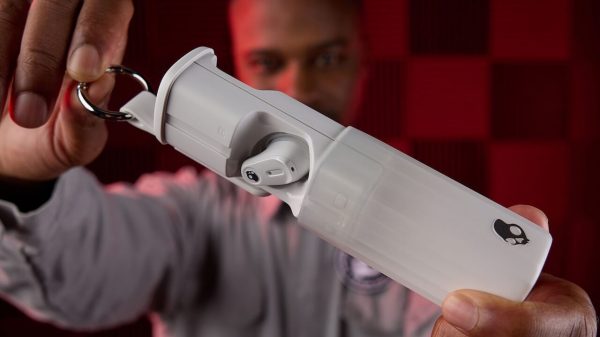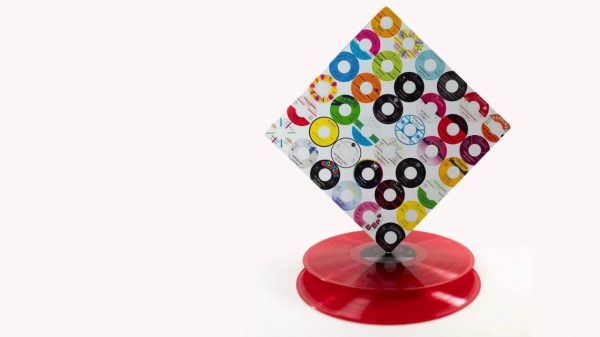British audio icon Bowers & Wilkins just launched two completely new TWS (True Wireless) earphones, the Pi6 and Pi8. These are not simply tweaks to existing models, but newly redesigned earphones with new drivers, an improved industrial design, improved comfort and enhanced functionality over their predecessors. And these upgrades come without an increase in prices. The Pi6 sells for the same price as the Pi5 S2 ($249.99) while the Pi8 comes in at $399.99 which is the same price as the Pi7 S2 that it replaces.
The Pi6 adopts many of the technologies in the previous flagship in-ear while the new Pi8 has more in common with the company’s highly acclaimed Px8 over-ear flagship headphones including a new carbon cone driver and improved ANC (Active Noise Cancellation).

Andy Kerr, Bowers & Wilkins’ Director of Product Management, tells us that the changes made to the earphones’ design and functionality were informed directly by feedback from reviewers and customers of the earlier products. The company’s goal in designing these new earphones was to improve the fit and finish, improve comfort and enhance functionality without losing anything in sound quality. In fact, the new driver design and form factor enhance the sound quality as well.
Kerr told us that, as a prerequisite to creating the new design, the company commissioned a comprehensive study of the anatomy and geometry of the human ear. They found a few things they were not expecting:
- Ear size is not correlated to gender – ears come in all shapes and sizes in both men and women
- Ear size is not correlated to race or ethnicity
- Diameter of the sound tube has greatest impact on sound quality
The sound tube is the section of the bud with the ear tip on it, which fits into the ear canal. Acording to Kerr, “Essentially, acoustic engineers would like the widest tube possible but at the same time, it has to fit comfortably to the ear. So it’s an exercise in judging engineering compromises correctly.”
With that in mind, Bowers & Wilkins has tweaked the mechanical design of the earbuds and includes four different ear tips of different sizes in order to fit a large majority of ear shapes and sizes comfortably and securely. Getting a tight, secure seal is critical to providing the best sound isolation and the best bass response.

The company has also moved the microphones (three per side) so that they are more optimally placed for call sound quality and won’t be blocked by the wearer’s ear. The Pi6 uses Qualcomm’s latest ANC technology while the Pi8 uses an in-house-developed ANC based on Alango’s advanced DSP technology. This is the same ANC tech used in the company’s Px8 over-ear flagship headphones.
Both earphones include new 12mm drivers (increased from 9mm in the predecessors). The Pi6 driver is made of bio cellulose, similar to the Px7 S2 over-ear driver, while the Pi8 uses a new Carbon Cone driver, similar to the one in the Px8 over-ear headphones, but smaller.

Playback times have increased significantly from the previous generation. The Pi6 will last about 8 hours with a full charge with ANC on, with 16 more hours (2 charges) from the case for a total of 24 hours of disconnected play time. The Pi8 doesn’t have quite as much stamina with 6.5 hours from a charge with ANC engaged and about 13.5 additional hours for a total of 20 hours of play time between charges. Both the Pi5 S2 and the Pi7 S2 could only manage about 5 hours on a full charge with ANC disabled (much less with ANC active) so both the Pi6 and Pi8 offer nice improvements in playback longevity.

The Pi8 offers a cool feature that audiophiles are sure to get excited about, particularly those with Apple devices: its charging case supports AptX Adaptive retransmission for locally connected sources. This means you can connect the Pi8’s case to an iPad, MacBook or iPhone 15’s USB-C port and it will retransmit the audio to the Pi8 in high resolution AptX Adaptive format. This bypasses Apple’s own Bluetooth limitations and should provide a higher quality listening experience for Apple users. You can also connect a 3.5mm to USB-C cable to the case if you want to tap into the in-flight entertainment system on your next flight. Just slide the case into the seat pocket in front of you and it will maintain a high quality AptX Adaptive wireless Bluetooth connection to the earphones. No more tripping over wires on those bathroom breaks (and there was much rejoicing).
Both of the new models take advantage of many of the features of Bluetooth 5.4 including multi-point connectivity and AptX Adaptive with support for up to 24-bit/96KHz high resolution audio. The Pi8 also supports the new Bluetooth AptX lossless option for greater quality and fidelity to the source. Both models are MFi (Made for iPhone) certified and will also support Google Fast Pair via an update soon after launch.
Bowers & Wilkins Music app also features enhancements such as 5-band graphic EQ for the Pi8 and bass/treble adjustments for the Pi6. The app, and the earphones themselves, also now support pairing without having to put the ‘phones back in their case. Just hold the pairing button on the earphones or click the in-app option to pair the ‘phones to a new device.
Comparison

| Pi8 | Pi6 | |
| MSRP | $399 | $249 |
| Technical Features | High-performance DSP with dedicated DSP and amplifier/DAC | High-performance DSP |
| True 24-bit audio connection | True 24-bit audio connection | |
| 5-band customizable EQ + TrueSound™ mode | 2-band customizable EQ | |
| Bluetooth 5.4 with aptX™ Lossless technology | Bluetooth 5.4 with aptX™ Adaptive technology | |
| Multipoint connectivity | Multipoint connectivity | |
| Active Noise Cancellation (ANC) | Active Noise Cancellation (ANC) | |
| Wireless & USB-C charging | USB-C charging | |
| Fast charging support | Fast charging support | |
| Apple® MFi Made For iPhone® support | Apple® MFi Made For iPhone® support | |
| Bluetooth Codecs | aptX Lossless | – |
| aptX Adaptive | aptX Adaptive | |
| aptX Classic | aptX Classic | |
| AAC | AAC | |
| SBC | SBC | |
| Microphones | 3 per earbud for telephony and ANC | 3 per earbud for telephony and ANC |
| Drive Units | 12mm Carbon Cone | 12mm Bio-cellulose |
| Battery Type | Rechargeable Lithium lon (earbuds and charging case) | Rechargeable Lithium lon (earbuds and charging case) |
| Battery Life & Charging | Up to 6.5 hours for earbuds (with ANC on) | Up to 8 hours for earbuds (with ANC on) |
| Additional 13.5 hours from charging case | Additional 16 hours from charging case | |
| Charge time = 2 hours | Charge time = 2 hours | |
| 15-minute charge = 2 hours playback | 15-minute charge = 2 hours playback | |
| Wireless Charging Support | Yes | – |
| Water Resistance (earbuds) | IP54 | IP54 |
| Accessories | Charging case: USB-C & 3.5mm analogue jack (wireless audio retransmission via charging case) | Charging case: USB-C |
| Extra Small / Small / Medium / Large ear tips | Extra Small / Small / Medium / Large ear tips | |
| 60cm USB-C to USB-C charging cable | 60cm USB-C to USB-C charging cable | |
| Charging Case Dimensions | 65mm (w) x 29mm (d) x 52mm (h} | 65mm (w) x 29mm (d) x 52mm (h} |
| Earbud Weight (each) | 7 g | 7 g |
| Charging Case Weight | 46 g | 46 g |
| Finishes | Anthracite Black | Cloud Grey |
| Dove White | Forest Green | |
| Jade Green | Glacier Blue | |
| Midnight Blue | Storm Grey |
The Bottom Line
Bowers & Wilkins seems to be listening to their customers (and reviewers) about the limitations in their current in-ear TWS earphones and are addressing those head-on with these newly redesigned models. With no increase in prices compared to the earphones they’re replacing, the Pi6 and Pi8 should offer formidable competition to the market leading in-ear TWS ‘phones from Sony, Bose and Apple. If these new earphones approach the sound quality of the company’s Px7 and Px8 over-ear phones, we should be in for a treat.
The Bowers & Wilkins Pi6 and Pi8 are expected to begin shipping on September 9, 2024 and will be available through the company’s retail partners. We’ll be publishing full reviews of both models so stay tuned.
Where to Buy: Bowers & Wilkins TWS ANC Earphones on Amazon.com
- Pi6 – $249 at Crutchfield
- Pi8 – $399 at Crutchfield
Related Reading:


